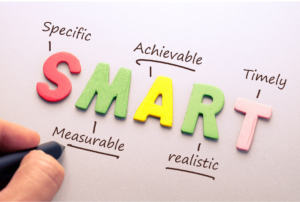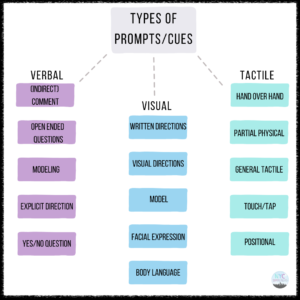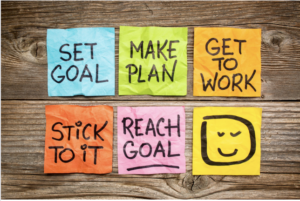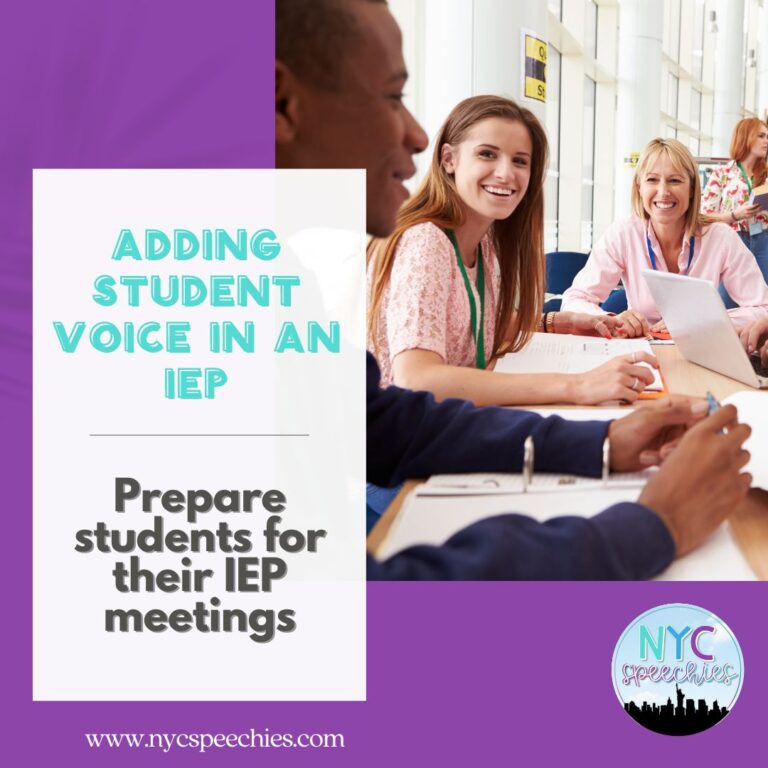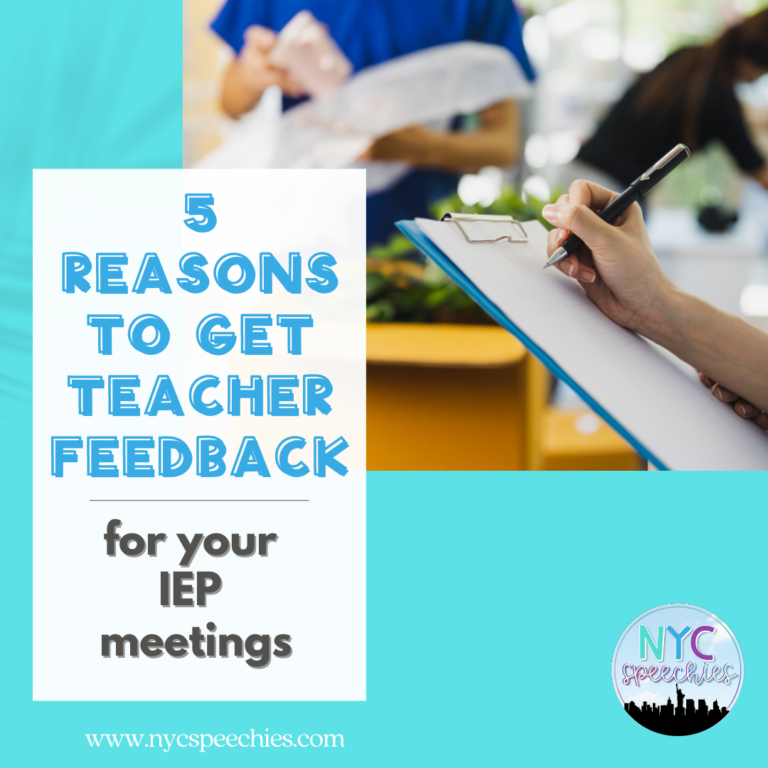5 Easy Steps to Write an IEP Goal
Have you ever found yourself typing into a google search, “executive function annual goal for older students” or maybe even searching, “free SLP goal bank?” Goal writing is often the hardest part about writing a student’s Individualized Education Plan (IEP). We find ourselves staring at the computer screen because we want to make sure the annual goal is measurable. It would be so much easier to just have your own go-to goal bank that you can reuse year after year. We are here to guide with a recipe for creating measurable annual goals. We made goal writing easier and we wanted to share some goals with you to add to your goal bank.
Goal Builder
As with most things, it is always easier when you break down a bigger process into smaller and achievable steps. We like to break down the goal into 5 parts:
- Expectation
- Criteria
- Prompt Level
- Method
- Frequency of Assessment
Expectation
When writing a goal, the expectations are the words you use to start the goal. You want to ask yourself, “What do I want my students to achieve?” You need to remember to use an action word and a strategy.
An example: The student will define unknown vocabulary terms using context clues
Criteria
The next part to consider when writing a goal is the criteria you are expecting your student to achieve in order to achieve mastery. You can ask yourself, “How do I know when the goal has been achieved?”
Examples: 80% accuracy or you could write it as 8 out of 10 trials
Prompt Level
Another part of the goal to consider is the prompt level the student may need in order to achieve the goal based on the criteria. Consider answering this question, “What level and/or type of support do I plan to provide?”
Examples: minimal verbal prompting or moderate visual prompting
Method
When creating a goal the method needs to be considered based on the location of services and type of activities presented to the student. Consider answering this question, “How will I measure the progress for this goal?”
Examples: direct observations, teacher made materials, and/or data collection
Frequency of Assessment
The last part of goal writing is considering how often you plan to assess the student’s progress. Think about a realistic frequency based on the student’s mandate and the difficulty of the goal.
Examples: once a month or quarterly
When we put so much pressure on ourselves to write the perfect goal, we often struggle and end up staring at the computer.
Practice using the Goal Builder
Let’s create a goal using the Goal Builder. Our sample student struggles with vocabulary, lets create a goal.
- Expectation: Student will define unknown vocabulary terms using context clues
- Criteria: 80% accuracy
- Prompt Level: verbal prompting
- Method: Provider observations
- Frequency: Once a month
Bring it all together to create YOUR goal.
Student will define unknown vocabulary terms using context clues with 80% accuracy with verbal prompting based on provider observations and progress will be assessed once a month.
Now that we practiced writing a goal, we want to share a few of our favorite goals.
- Executive Function Goal: [STUDENT] will improve executive function skills by utilizing daily and/or weekly work logs and accurately writing in his upcoming assignments in 4 out of 5 days over 3 consecutive weeks as measured by homework log checks, rubrics, and/or SLP provided materials and will be assessed on a monthly basis.
- Vocabulary Goal: [STUDENT] will determine the meaning of unfamiliar words by utilizing context cues in 3 out of 4 trials over 4 consecutively attended speech and language sessions as measured by SLP created materials, direct observations, and/or data collection and will be assessed on a monthly basis.
- Reading Comprehension Goal: [STUDENT] will answer higher-order questions related to making predictions, inferences, and identifying the main idea/theme of a passage read or heard, using various graphic organizers as needed in 3 out of 4 trials over 4 consecutively attended speech and language sessions as measured by SLP created materials, direct observations, and/or data collection and will be assessed on a monthly basis.
- Oral Language Goal: [STUDENT] will utilize the ‘Roles in a Conversation’ (e.g., Instigator, Builder, Challenger, Clarifier, Prober, and Summarizer) as a way to connect, comment, and question within a class discussion given a discussion topic or question by utilizing 4 out of the 6 roles over four consecutively attended speech and language sessions as measured by SLP created materials, direct observations, and/or data collection and progress will be measured twice a month.
After years of writing and tweaking our own goals, we put together a goal bank that has become widely popular for providers who work with older students. Our bundle shares goals from 12 different categories that fall under the speech and language umbrella:
- Reading Comprehension
- Writing
- Pragmatics
- Executive Functioning
- Auditory Comprehension
- Vocabulary
- Fluency
- In-Classroom Service
- Oral Language
- Study Skills
- Transition
- Alternate Assessment
Sometimes you just need to make a minor change for a student, but having the foundation for a goal makes the difference. We hope this style of goal writing is something you can easily pick up on and do on your own.
Click here for our best seller, Speech and Language High School IEP Goal Bank_Bundle

